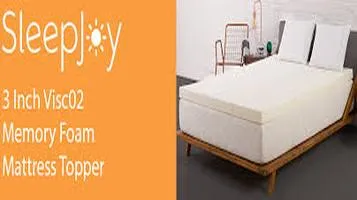Nesting Tables: A Comprehensive Review
Nesting tables are a versatile and stylish furniture solution that consists of a set of tables designed to fit seamlessly together when not in use. Typically crafted in graduated sizes, these tables can be easily stacked or arranged in various configurations to suit different needs and spaces. Often used in living rooms, they serve as functional coffee or side tables and provide additional surface area for entertaining or daily activities. Nesting tables are available in a wide range of materials, including wood, metal, and glass, allowing them to complement diverse interior design styles. Their space-saving design makes them particularly appealing for smaller homes or apartments, offering a practical yet aesthetically pleasing addition to modern or traditional decor.

Nesting tables have become an increasingly popular choice in modern home decor, and for good reason. These versatile pieces of furniture offer a blend of functionality and style that can enhance any living space. In this review, we'll delve into the features, benefits, and potential drawbacks of nesting tables to help you decide if they are the right addition to your home.
Design and Aesthetics
One of the most appealing aspects of nesting tables is their design. Typically, a set of nesting tables will include two or three tables of varying sizes that can be neatly stacked together. This design is not only visually appealing but also incredibly practical. The tables can be used individually or together, offering a flexible solution for various needs.
Nesting tables come in a wide range of styles, from modern and minimalist to rustic and traditional. This variety ensures that there is a design to complement any decor. Whether you prefer sleek metal frames with glass tops or wooden tables with intricate carvings, the options are nearly endless. The ability to mix and match different styles within a set adds another layer of customization, allowing you to create a unique look that fits your personal taste.
Functionality
The primary advantage of nesting tables is their versatility. They can be used in various ways throughout the home:
1. Living Room: As side tables or coffee tables, nesting tables offer a convenient place to set drinks, snacks, or remote controls. Their compact design makes them ideal for smaller spaces, where a full-sized coffee table might be too bulky.
2. Bedroom: Nesting tables can serve as nightstands, providing a place for a lamp, alarm clock, or a book. The smaller tables can be tucked away when not in use, freeing up floor space.
3. Home Office: In a home office, nesting tables can be used as additional workspace or as a place to organize office supplies. Their portability makes them easy to move around as needed.
4. Entertainment Areas: For parties or gatherings, nesting tables can be separated and placed around the room to hold drinks and appetizers, ensuring guests have a convenient place to set their items.
Space-Saving
One of the standout features of nesting tables is their space-saving design. In smaller homes or apartments, maximizing space is crucial, and nesting tables offer an elegant solution. When not in use, the smaller tables can be neatly tucked under the largest one, taking up minimal floor space. This makes them an excellent choice for anyone looking to make the most of a compact living area.
Durability and Maintenance
The durability of nesting tables largely depends on the materials used. High-quality materials such as solid wood, tempered glass, and metal frames tend to be more durable and long-lasting. When purchasing nesting tables, it's essential to consider the quality of the materials and craftsmanship to ensure they will stand up to regular use.
Maintenance of nesting tables is generally straightforward. Most surfaces can be wiped clean with a damp cloth, and occasional polishing or dusting will keep them looking their best. For tables with glass tops, a glass cleaner can be used to remove smudges and fingerprints. Wooden tables may require periodic conditioning to maintain their finish and prevent drying or cracking.
Potential Drawbacks
While nesting tables offer many benefits, there are a few potential drawbacks to consider:
1. Stability: Depending on the design, some nesting tables may be less stable than traditional tables. Lightweight or poorly constructed tables may wobble, especially when fully extended. It's important to choose a well-made set to avoid this issue.
2. Weight Capacity: Nesting tables are generally designed for light to moderate use. They may not be suitable for holding very heavy items, which could limit their functionality in certain situations.
3. Design Limitations: While the variety of styles is a benefit, it can also be a limitation. Some designs may not fit well with certain decor themes, making it challenging to find the perfect match. Additionally, highly decorative or intricate designs may be more difficult to clean and maintain.
Conclusion
In conclusion, nesting tables are a stylish and versatile addition to any home. Their space-saving design, combined with their multifunctionality, makes them a practical choice for various settings. Whether you need extra table space in the living room, bedroom, or home office, nesting tables offer a flexible and attractive solution. While there are a few potential drawbacks, such as stability and weight capacity, these can be mitigated by choosing high-quality materials and construction. Overall, nesting tables are a fantastic investment for anyone looking to enhance their living space with a touch of elegance and practicality.






